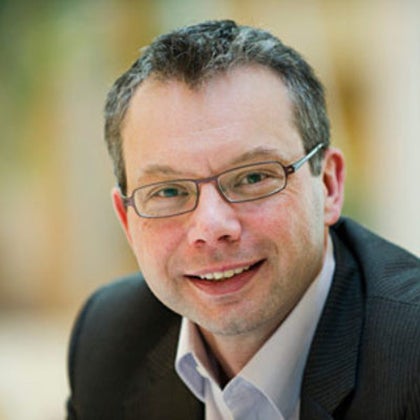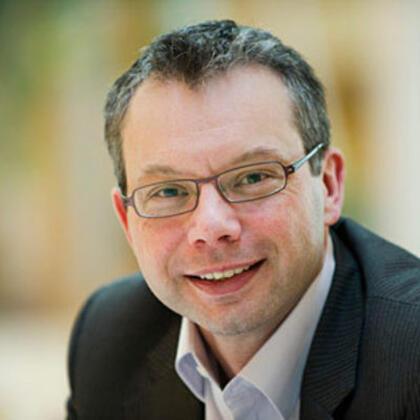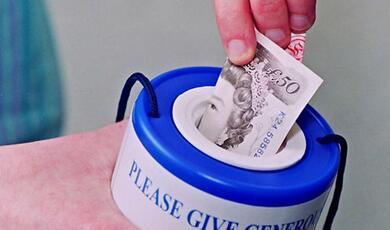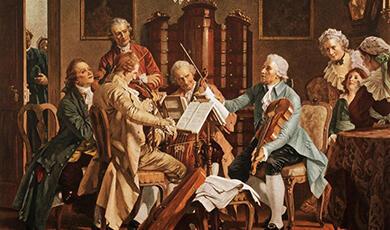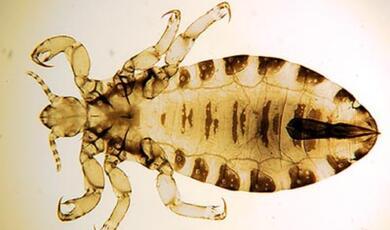Curious Eyes and Steady Hands - Anatomists in Georgian London
Share
- Details
- Transcript
- Audio
- Downloads
- Extra Reading
Simon Chaplin, Senior Curator, Museums of the Royal College of Surgeons of England
The late 18th century has been characterised as an age of body-snatchers, supplying stolen corpses for dissection by surgeons.
But why was this gruesome trade tolerated? How did the anatomists persuade their peers to condone, rather than condemn, the noisome business of dissection?
Next lecture in the series was The Dictionary Garret - anatomy of a room
Download Transcript
ANATOMISTS IN GEORGIAN LONDON
Simon Chaplin
The late 18th century has been characterised as an age of body-snatchers, supplying stolen corpses for dissection by surgeons. But why was this gruesome trade tolerated? How did the anatomists persuade their peers to condone, rather than condemn, the noisome business of dissection?
As London grew rapidly in the 18th century, so did the demand for qualified surgeons to care for the city’s burgeoning population. Unlike the cities of Edinburgh, Leiden and Paris – the leading centres for medical education at the time – London possessed no university to provide a natural focus for medical education. Instead, it fell to the Company of Barber Surgeons to take responsibility for the training of young surgeons. It was a task for which the Company, a relic of the mediaeval city guilds, was wholly inadequate. Since the early years of the 18th century the Company had jealously guarded its right to conduct anatomical lectures, read over the dissected corpses of executed felons. Yet these lectures – famously caricatured in the final plate of Hogarth’s Four Stages of Cruelty– offered the young surgeon little by way of practical instruction. Even after the creation of a separate Surgeons’ Company in 1745 and the subsequent passage of an Act granting the Company rights to the bodies of all executed murderers, the ‘anatomies’ at Surgeons’ Hall were irregular and poorly attended, at least by those who might have had most to gain from them. Instead, it was the public who flocked to the Hall next to the Old Bailey to see the dissections of London’s most notorious criminals.
Between 1752, when the Murder Act was passed, and 1796, when the Surgeons’ Company began its move west to Lincoln’s Inn Fields, over one hundred bodies were dissected at Surgeons’ Hall. The most infamous had their skeletons preserved, hung in niches round the Hall to serve as permanent moral lessons to the crowds who thronged the gallery.
For those whose morbid curiosity was not sated by these grisly exhibitions, there were other venues in central London provided which more varied – if no less wholesome – displays of anatomical exhibits. Such shows offered the paying public a variety of vicarious delights. One of the least salubrious was Mrs Salmon’s waxworks in Fleet Street which included a series of ‘anatomical’ waxes alongside a series of tableaux including one of ‘Shepherds and Shepherdesses making violent love’. Only slightly more respectable was Rackstrow’s Museum, also on Fleet Street. Here, exhibits included waxworks of giants and dwarves, the skeleton of a whale, Egyptian mummies and snakes in spirit and, in the final room, models, plaster casts and preserved preparations illustrating what was coyly called ‘the process of generation’.
Despite their dubious claims to medical respectability it was clear that these public shows were not the place for the young surgeon wishing to improve his skills. Instead medical students in London were catered for by a new class of medical institution: the private anatomy school. Between 1750 and 1800 hundreds of enterprising practitioners set themselves up in business to teach students every aspect of medicine. Their courses were advertised in newspapers and broadsheets and conducted in a variety of commercial and domestic premises. Several were clustered around Holborn, including the Anatomical Theatre of John Sheldon on Great Queen Street and that of Andrew Marshall in Thavies Inn. Warwick Court, Hatton Gardens, Temple Bar and Fetter Lane were also the sites of anatomical lectures. Over the course of the century, these schools spread west - following the growth of the city itself - to Covent Garden, Great Windmill Street, Tottenham Court Road and Leicester Square.
While the courses themselves covered a variety of subjects – from anatomy to surgery or midwifery – they all had one thing in common: a reliance on detailed anatomical knowledge. Unlike the lectures at Surgeons’ Hall, the private lecturers offered their students the chance to carry out dissection themselves – a style of teaching popularised in London by William Hunter (1718-1783), whose anatomy school in Great Windmill Street provided a model to many others.
Yet despite their popularity with students, these new schools suffered a common problem. Unlike the Company of Surgeons, the private teachers were not entitled to the bodies of criminal from the gallows. Instead, they had to resort to other means to secure a supply of fresh corpses for their lessons. This grim traffic was the preserve of the grave-robbers who would deliver their newly exhumed goods under the cover of darkness.
Not surprisingly, the association between anatomists and bodysnatchers was the subject of public criticism and, on occasion, popular outrage. At least one anatomist was burned out of his house by a mob protesting at his involvement with the ‘resurrectionists’. However, for the most part the authorities – and the neighbours of anatomists – turned a blind eye to this disagreeable trade in human flesh. When Andrew Marshall in Thavies Inn was caught red-handed in receipt of a hamper containing the bodies of two children, he escaped any legal sanction. Similarly the surgeon Thomas Young was given a cursory fine of just ten pounds when convicted of conspiring with a workhouse superintendent to acquire the body of a recently deceased inmate.
How did they get away with? Part of the answer lies in the ways in which the surgeon-anatomists cultivated public support for the product of their researches, deflecting attention from the source of their expertise. They were quick to apply the fruits of anatomical study to the treatment of the sick, and gradually gained recognition for their expertise in diagnosis and operative surgery. They appeared in court as expert witnesses in cases of rape and murder, taught anatomy to artists, and used their skills to identify rare animals for gentlemen natural historians. The key attributes of the anatomist – the ‘steady hand’ and ‘curious eye’ were extolled, turning anatomical study from an unsavoury niche discipline into the cornerstone of scientific medicine.
Many of the leading anatomists – including William Hunter and his brother, the surgeon John Hunter (1728-1793) – created museums in which they could display anatomical preparations alongside specimens of natural history, paintings, sculpture and other kinds of collectable objects. These museums were both a valuable practical resource – a most ‘instructive school for the student’, according to one commentator – but also a powerful public statement of the value of anatomical study. In the museum, the products of noisome private labour in the dissecting room were transformed into the objects of public attention, sanitised and rendered presentable for a polite audience of peers and patrons. Even King George III and Queen Charlotte were moved to commission a series of preparations from John Hunter, to be used for teaching the children of the Royal Family the art of anatomy.
Today, no trace remains of the original anatomy schools of Georgian London. However, visitors to Holborn can still see what remains of John Hunter’s collection. After his death, Hunter’s museum was purchased by the government and given into the care of the Company of Surgeons. The acquisition of the collection marked a turning point ion the fortunes of the Company. Equipped with a resource that was not only of great medical value, but also a source of immense public prestige, the Company was successful in its ambitions to gain a Royal Charter. The newly incorporated Royal College of Surgeons made its home in Lincoln’s Inn Fields. Today the Hunterian Museum at the College is still open to the public. Following a major refurbishment in 2004, the museum now offers a stunning display of over 3000 of John Hunter’s original anatomical preparations and specimens of natural history, together with paintings by artists such as George Stubbs and William Hodges. Although the setting for the museum is unashamedly modern, it recaptures the sense of visual spectacle that helped to win the respect of the Georgian public for the steady hands and curious eyes of a new breed of scientific surgeon.
© Simon Chaplin, Gresham College, 1 December 2005
This event was on Thu, 01 Dec 2005
Support Gresham
Gresham College has offered an outstanding education to the public free of charge for over 400 years. Today, Gresham plays an important role in fostering a love of learning and a greater understanding of ourselves and the world around us. Your donation will help to widen our reach and to broaden our audience, allowing more people to benefit from a high-quality education from some of the brightest minds.


 Login
Login
